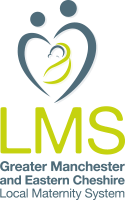Transcript – Breast care after having your baby
The breasts undergo a lot of changes during pregnancy and those changes continue after the birth. Your body naturally prepares to feed your baby by producing small amounts of a thick, yellow-coloured fluid called colostrum. It’s a very concentrated food, so your baby will only need a small amount. Your baby’s stomach is the size of a marble at first and so a teaspoonful of colostrum will be enough to fill your baby up.
After the first 2-5 days you will start producing a much larger volume of milk. This is known as your milk ‘coming in’ and it happens to all new mothers, irrespective of your chosen feeding method. However you are feeding baby, breast or bottle feeding, be sure to watch out for redness, lumps or hot areas of your breasts which may be painful and could be accompanied by a fever and flu like symptoms; this could be a sign of infection in your milk ducts called mastitis, and you should see your midwife or GP if you experience these symptoms.
It’s also useful for you to know about the milk ‘let-down reflex’. This is where milk actually leaks from the breast, stimulated by a hormone called Oxytocin. This hormone is also known as ‘the love hormone’, because it can be released when you see and think of your lovely baby. This can create some awkward moments, for example when waiting for the bus or on hearing another baby cry, as your thoughts and your body’s response might be enough to stimulate the hormone and cause milk to leak from your breasts. Breast pads slipped inside your bra can prevent you getting two damp circles appearing on your shirt with little warning. Reusable or disposable breast pads work just fine, but make sure you change them regularly, and avoid any that are plastic lined, as these keep moisture in and can cause nipple soreness.
If you are breastfeeding, look into getting a feeding bra which fits you well, as these are supportive, aid good milk production and flow, and allow easy access so you don’t have to get totally undressed to feed baby. If you’re having problems with feeding, experiencing soreness, or struggling with engorged (overly full) breasts, check out the information about early feeding and common challenges on our website or speak to your midwife.
If you’ve decided that breastfeeding isn’t for you, wearing a well-fitting bra and avoiding all nipple and breast stimulation will help your body to stop producing milk as quickly and painlessly as possible. Nevertheless, this can still be a little painful sometimes, so try a cold compress or ice pack, alongside some pain relief if you’re struggling. Avoid the temptation to touch your breasts or run them under a warm shower to release your milk – your body will just produce more milk to compensate, prolonging the process. So just keep the shower head and your hands well away and let your bra do its work.






